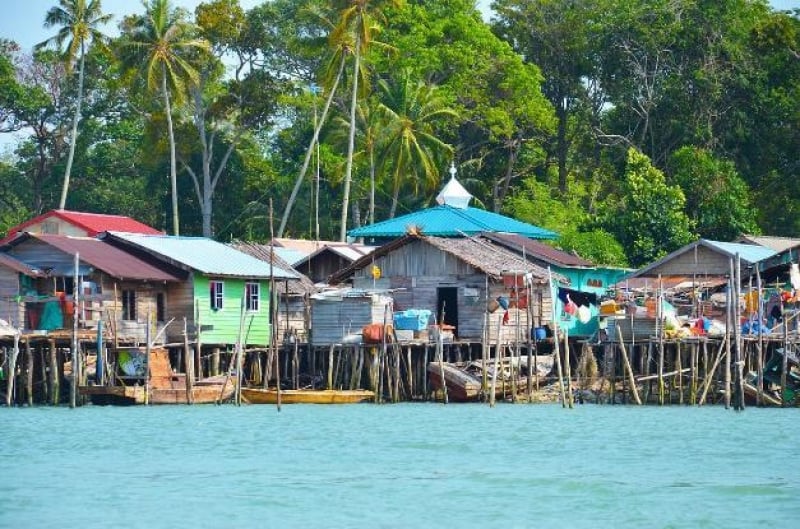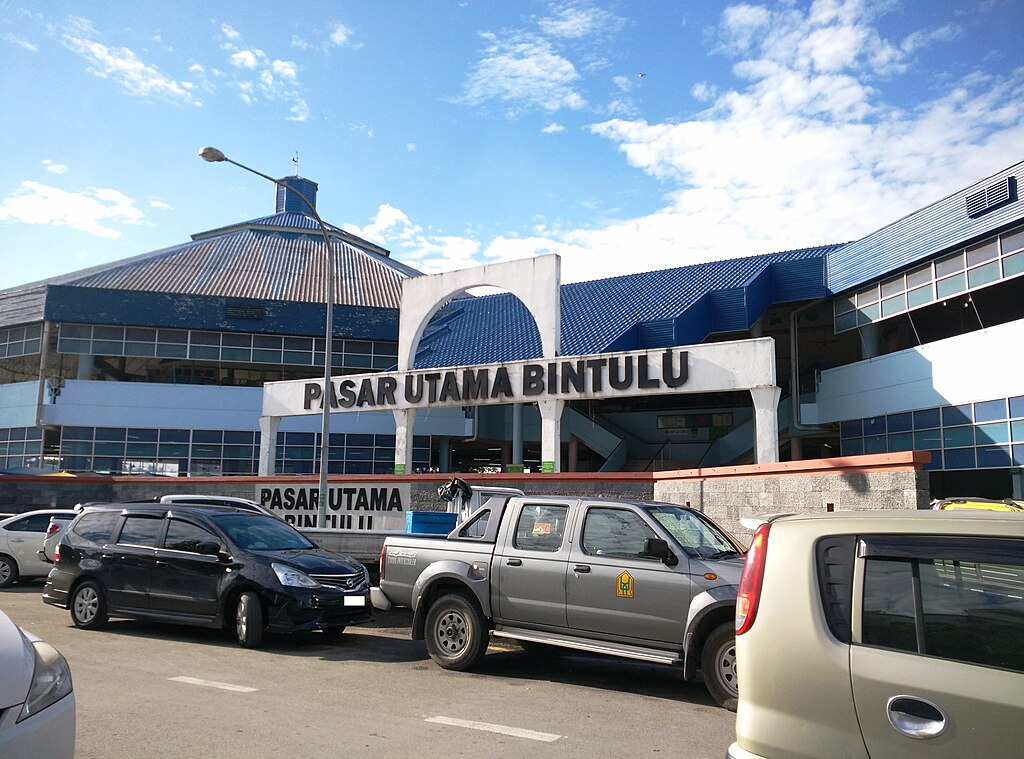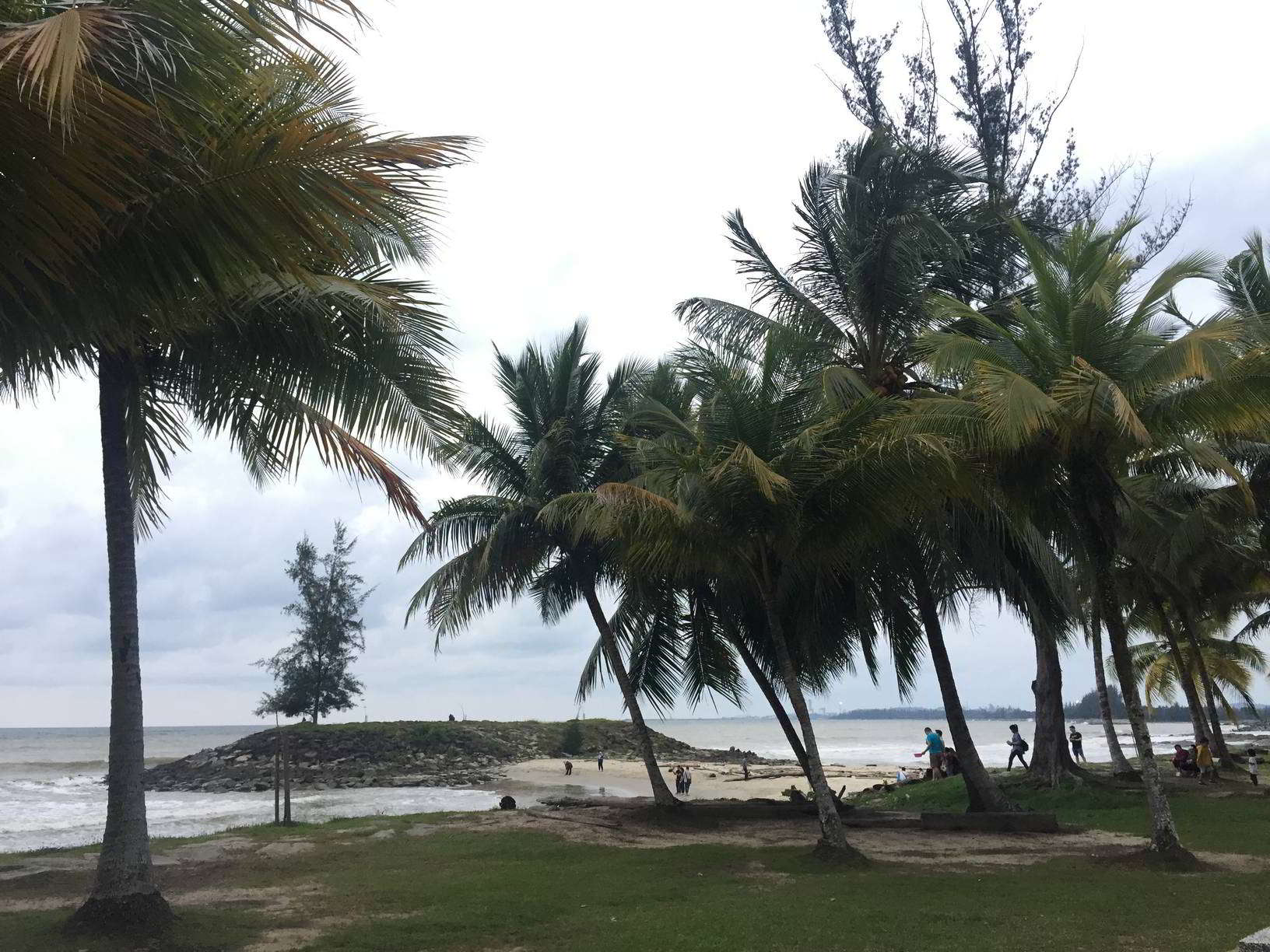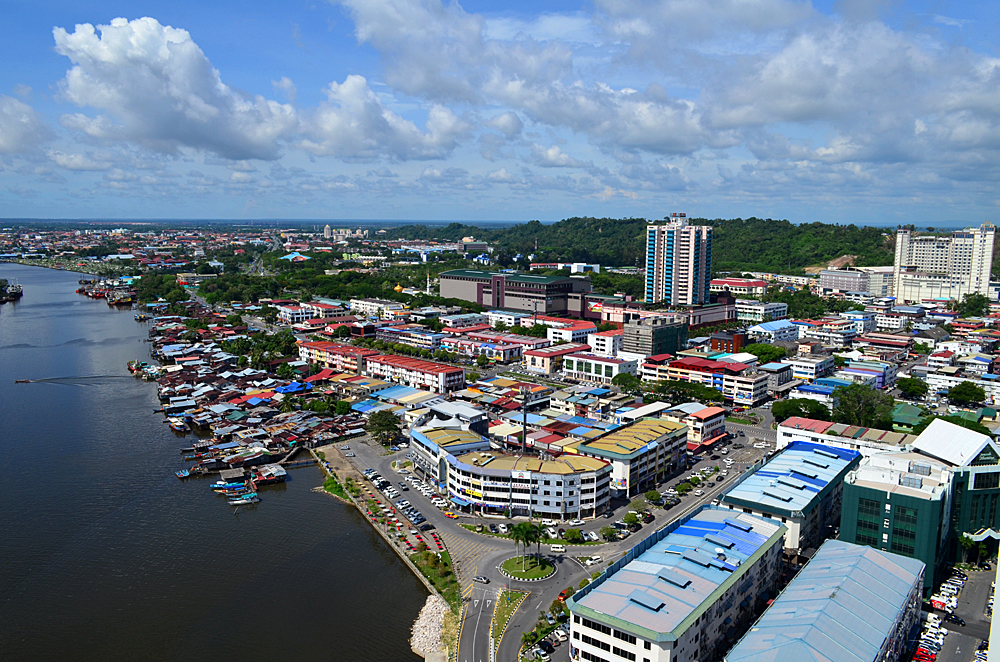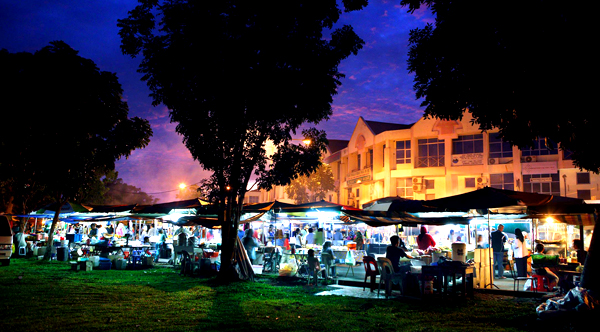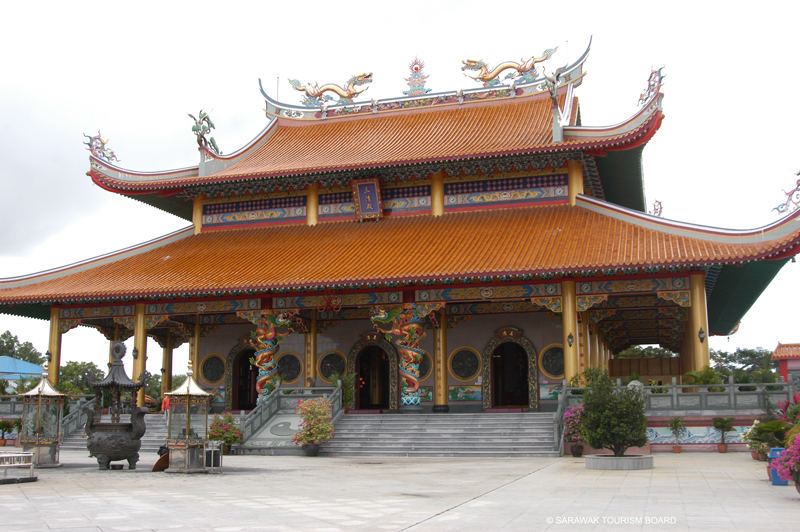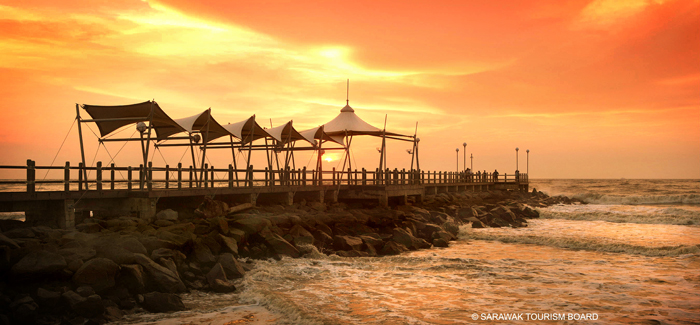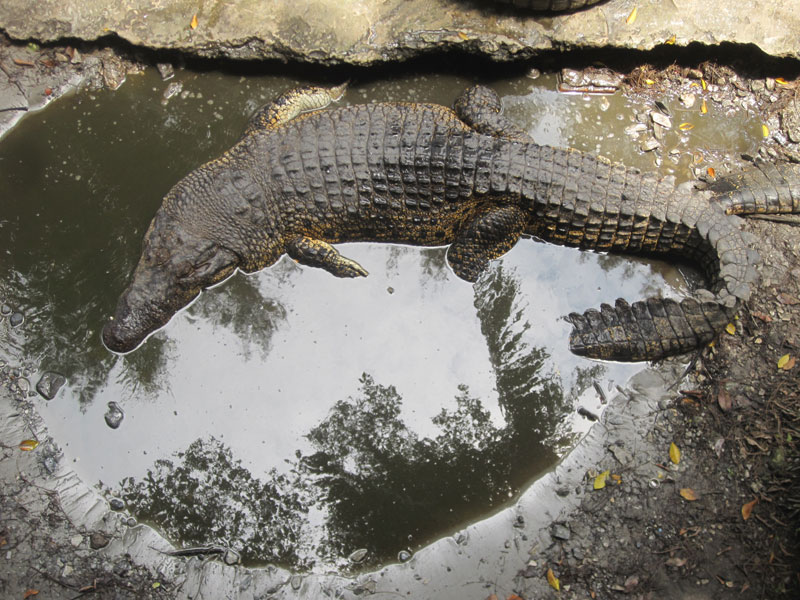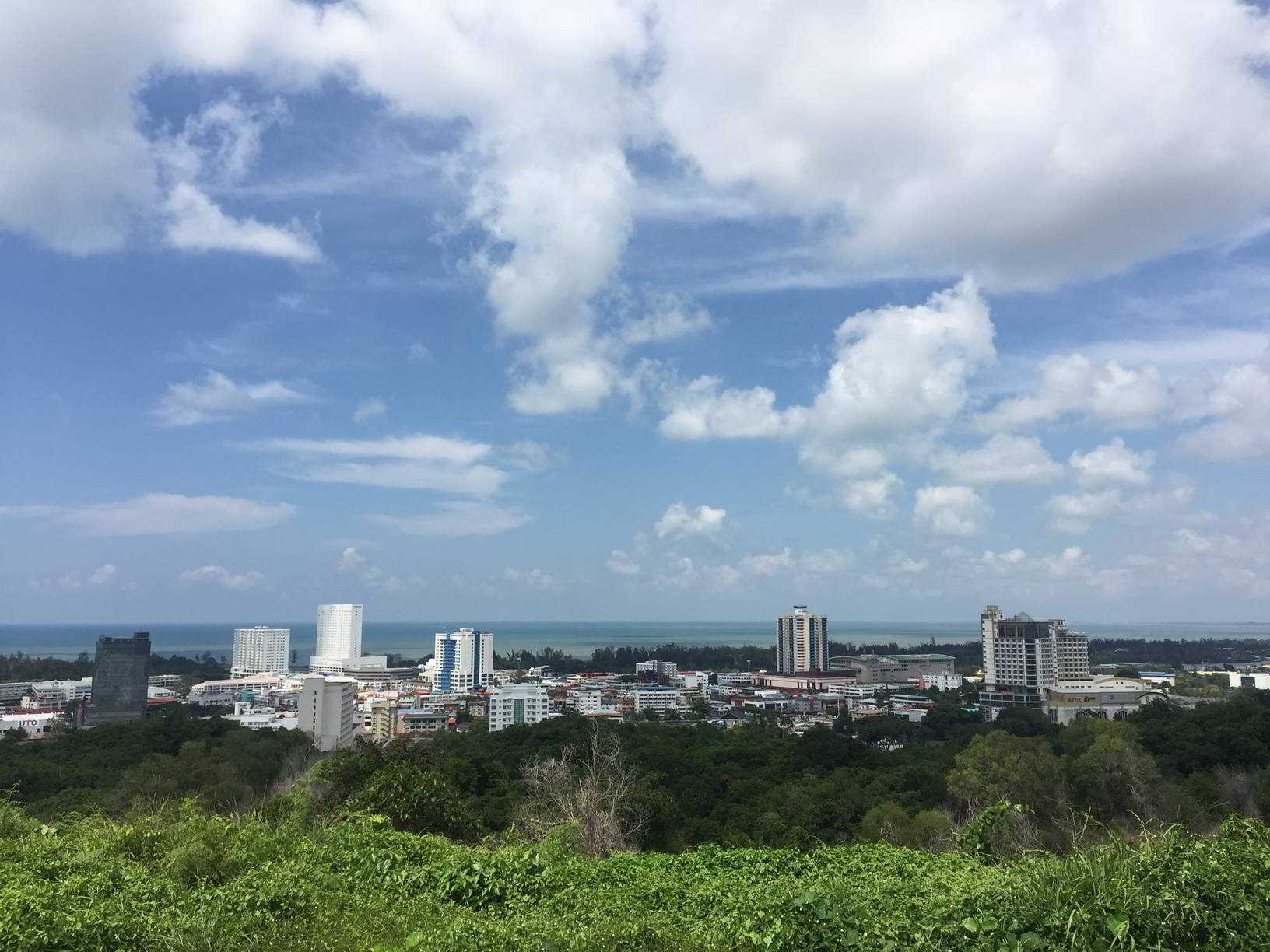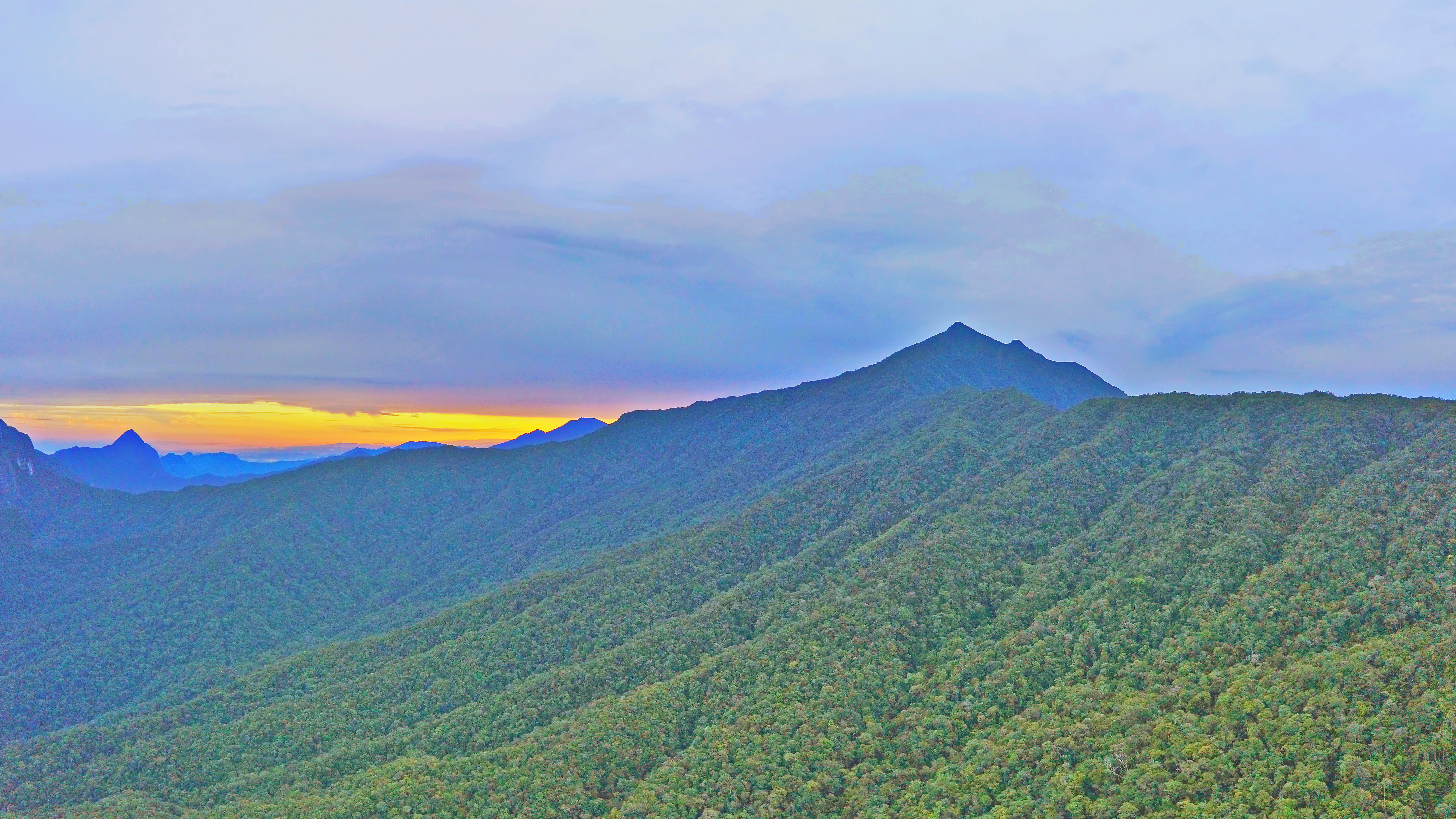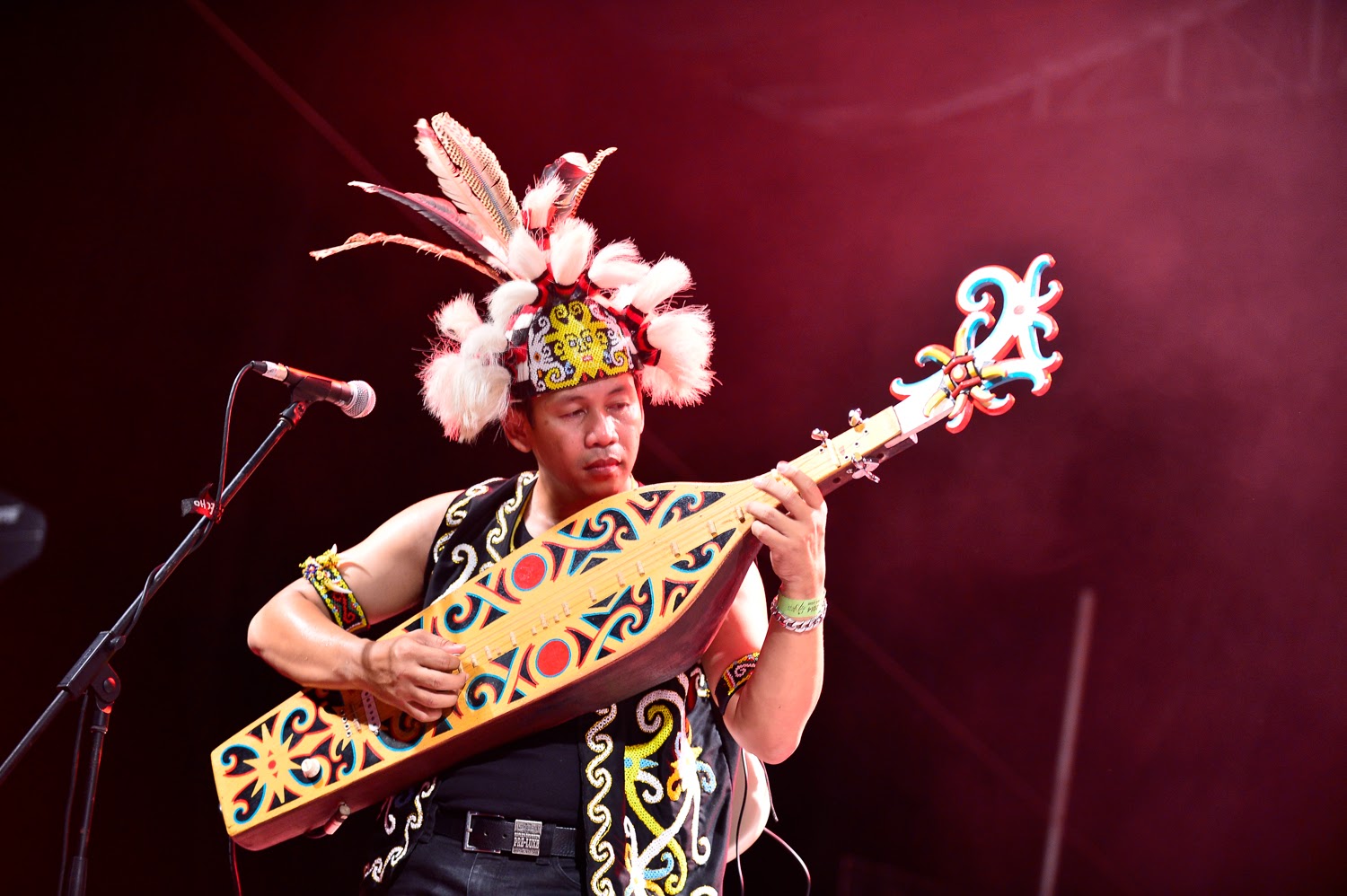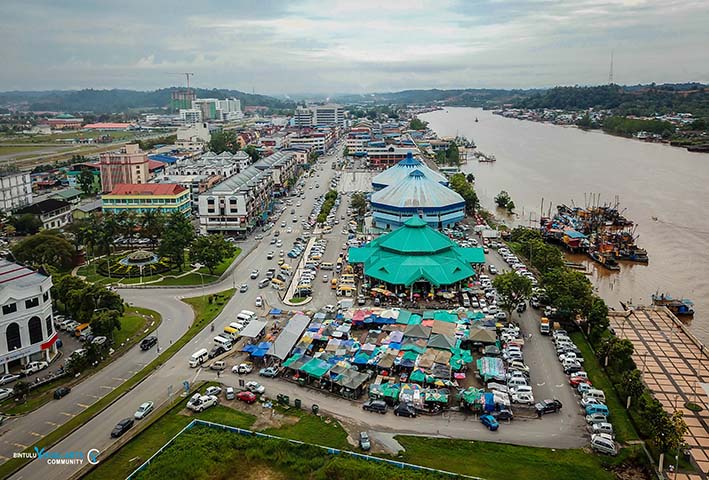
Bintulu
Bintulu is a small coastal town well-known for its golden beach and the rare endemic Irrawaddy dolphins. It is also famed for the longest kite festival in Malaysia. The town also has the best belacan shrimp sauce in Malaysia. Bintulu is a popular stopover on the way to Similajau National Park.
Masjid Assayakirin is a major spot and the biggest mosque in Bintulu. A monumental place to visit is the Negri Monument which marks the historical meeting held by the British. The Tanjung Batu Beach which is a rocky beach perfect for a relaxing day by the waters. Similajau National Park also has a breathtaking golden beach which is certainly a must-visit. The Bintulu Promenade offers a wonderful sight of the waterfront and the sunset while you reinvigorate in this recreational park.
Nearby village of Kampung Jepak gives an understanding of the traditional Malay life. It is packed with the rustic lifestyle of local people with several activities to witness and experience ranging from fish drying, cooking, manufacturing of shrimp paste, tutop and cencaluk. The very renowned Borneo International Kite Festival takes place in Bintulu in September end and October start of every year.
During the 16th century, Bintulu was named River de Burulu by Portuguese cartographers. There are several legends surrounding the name Bintulu. During the Brooke dynasty, the indigenous practised headhunting to maintain their social status in the community. They threw the heads into the Kemena River, after which the heads had to be collected from the river. The practice of collecting the heads was known as Metuk Ulow or picking heads in the local native language. Another story relates that two Iban warriors named Berengik and Jaleb built houses along the river. They and their followers frequently carried out preservation of severed heads near a small river stream branching off from Sebezaw River because the river bank was flat and wide. Therefore, the small river stream was named Metuk Ulow River. Outsiders who came to Bintulu subsequently pronounced the name as Mentulau, and later the name evolved into Bentulu and, finally, Bintulu.
James Brooke was appointed the White Rajah of Sarawak, today‘s Kuching by the Bruneian Empire in 1841. In 1861, the Sultanate of Brunei ceded the Bintulu region to Brooke. Bintulu was a small settlement at that time. A wooden fort named Fort Keppel was built in the village, named after Sir Henry Keppel, who was a close friend of the Rajah James and Charles Brooke. Sir Henry Keppel was responsible for crushing the Dayak piracy in the Saribas between 1840 and 1850. During World War II, Rajah Charles Vyner Brooke ordered the construction of airstrips in Kuching, Oya, Mukah, Bintulu, and Miri. Construction of the Bintulu airstrip was started in 1934 but discontinued in October 1938 due to financial reasons. Japanese forces landed in Miri on 16 December 1941 and Sarawak fell into Japanese hands when they conquered Kuching on 24 December 1941. When the Japanese invaded Sarawak, Charles Vyner Brooke already left for Sydney, Australia. At the same time, his officers were captured by the Japanese and interned at the Batu Lintang camp. During the Japanese occupation, the Japanese used the airstrip for military purposes. However, the airstrip was heavily bombed by Allied forces. The British began reconstruction of the airstrip after the war; during the project, many unexploded bombs were unearthed.
In the 1960s, Bintulu was still a small fishing village, with a population of 5,000. No roads were constructed in Bintulu until 1969 when the first untarred road was built to connect Bintulu to Miri. Before 1960, Bintulu was connected to Kuching by sea through a ship named Swee Joo and after 1960, the ship Chin Chin was added to the route. It took around 36 to 48 hours to reach Bintulu from Kuching, depending on the sea conditions. Large reserves of natural gas were discovered off the coast of Bintulu in 1969.
The Similajau National Park is located 30 km northeast of the town. The park was gazetted in 1976, covering an area of 89.96 sq km with sandy beaches, rocky headlands, jungle streams, and forests. Other national parks that can be accessed along the Miri–Bintulu road are the Lambir Hills National Park and Niah National Park.
Also known as the Taman Tumbina Zoo, the place is a popular combination of a botanical garden and a zoological park. It has plenty of usual birds like hornbills, parrots, doves, barbets, raptors, etc. and some animals like deer, tigers, bears and porcupines. The large park is divided into sections like the orchids garden, butterfly farm, bird garden, etc. A well-maintained park with clean roads and paths, there are some shelters and gazebo areas to rest and take shade from the hot sun. There is no cafeteria so it is advisable to carry food and water. The zoo is open from 9 am to 4:30 pm.
A 15-minute drive from Bintulu town centre, the Tanjung Batu Beach is an ideal getaway from the city’s hustle and bustle. Upon entering you will find some comfortable seats and a pathway leading to the tranquil beach. The beach is crowded on weekends with people enjoying picnics and gatherings along the blue water and cool breezy weather. The beach offers excellent sunset views and has a food centre close by.
Kampung Jepak is a traditional fisherman village well-known for its fish drying and manufacturing processes. The village lies away from Bintulu and is divided from the main town by the Sungai Kemena or the Kemena River. One can experience the authentic lifestyle of these Malay and Melanau settlers, and their occupations like sago processing, manufacturing shrimps, and making Terendak.
Situated approximately 2 km from Bintulu’s city centre, the Kuan Yin Temple is a Chinese temple dedicated to the Goddess of Mercy, Kuan Yin. The temple displays classical Chinese architecture with bright red pillars and roofs. There is an interesting sculpture animal garden with Chinese zodiacs and a beautiful koi pond just next to the temple. Being the only Chinese temple in Bintulu, the place is well-maintained and has a garden for visitors to relax.
Commonly known as Masjid Asy-Syakirin, the Assyakirin Mosque mosque is located about 3 km away from the Bintulu town centre, in the village of Asy-Syakirin. The first divisional mosque in Bintulu, it is situated at a recreational park of the same name and is known to have a fusion of classical and modern architecture. The dark blue dome structure is appealing and makes the mosque stand out. The mosque is the first in Malaysia to adapt to the idea of an open space area for naturally refreshing bright light and air flow. It hosts devotional classes, motivational speeches and camps to educate people on spirituality.
Pasar Tamu Bintulu is a large market for fruit, vegetable and grocery vendors. The marketplace is covered with an overhead cone-shaped roof that is the traditional architecture style of the Melanau settlers in Bintulu. Locally known as Ikan bilis, anchovies are commonly sold here at a very inexpensive rate. The area is located across the beautiful riverfront and next to the famous Pasar Utama.
Pasar Utama is a wet market allowing vendors to sell local meat, fresh jungle food, vegetables, fruits, snacks and seafood produce. The market is located at a pleasing riverfront area with peripheral fencing and a roof top that resembles the terendak, the local headgear of the Melanau folk. The upper level of the marketplace is a snack section and food court.
The annually held Borneo International Kite Festival is undoubtedly one of the largest kite festivals of the world attracting about 400 participants from over two dozen countries. Held over a span of three days, the town welcomes kite flying enthusiasts and aficionados to watch the beautifully created handmade kites take over the skies of Borneo. The kites are artistically prepared with vibrant colours, some animal and bird-shaped, cartoon characters, etc. The venue of the event is the Bintulu old airport and is organized every year by the Bintulu Development Authority.
The Bintulu promenade is a waterfront esplanade for tourists and locals to walk around and experience the calming weather. The promenade has an open car park area along with picturesque lush green landscapes in the background and fencing. The place offers excellent sunset views and soothing wind blows. It is a common place of interest among residents for gatherings and public events.
Bintulu Regatta is a an annual boat rowing race held over three days. The race receives hundreds of entries categorically from several neighbouring countries. The Regatta has a number of sections like the speed boat race, power boats and traditional long boat race. The venues tend to differ but it is usually held at the Sungai Kemena.
The Tanjung Batu Beach, also known as the Temasya Beach is located 3 km from the town centre. Taman Tumbina or Tumbina Park is located 4 km from the town centre. The park has a hornbill aviary, a butterfly garden, and a mini-zoo. Kidurong Tower is an observation tower located at Tanjung Kidurong offering views of the Bintulu oil and gas facilities shortly after nightfall.
Miri
Located near Malaysia’s border with Brunei, Miri lies in north-eastern Sarawak and is the state’s second-largest city. Before Miri was founded, Marudi was the administrative centre of the northern region of Sarawak. Miri was founded in 1910 when the first oil well was drilled by Royal Dutch Shell. The discovery of an oil field in Miri has led to the rapid development of the town. Miri became the administrative centre of the northern region of Sarawak by 1929. During World War II, the Miri oil fields were destroyed by the Brooke government to sabotage Japanese operations in Southeast Asia but to no avail; Miri town was the first landing point of Japanese troops in Borneo. The subsequent Japanese occupation led Miri to become a target of Allied air raids which caused the destruction of oil refinery facilities in Miri. The petroleum industry continued to be a major player in the city’s economy after the war. Oil exploration has moved offshore since the 1950s, but subsequently, new inland oil fields were found in 1989 and 2011. In 1974, the formation of Malaysian oil and gas company Petronas led to co-operation between Petronas and Shell on oil exploration in the Miri region. In 2005, Miri became the 10th city in Malaysia to be granted official city status, the first non-state-capital city to be bestowed such status.
Miri is the main tourist gateway to the world-famous UNESCO World Heritage Site, Gunung Mulu National Park; Loagan Bunut National Park; Lambir Hills National Park; Niah National Park and Miri-Sibuti Coral Reef National Park. The Gunung Mulu National Park with its Sarawak Chamber, which is the largest known cave chamber in the world by area, remains one of the favourite ecotourism destinations in Miri. Miri is also the birthplace of the Malaysian petroleum industry. Other major industries in the city include timber, oil palm and tourism.
Miri town is named after a minority ethnic group called the Jati Miriek or simply Mirek, or Miriek. This ethnic group is the earliest settlers in the region. Europeans who later came to the region for oil exploration mistakenly pronounced Miriek as Miri, and this name continues to be used today.
Charles Brooke succeeded James Brooke as the new Rajah of Sarawak in 1868. By 1883, the Sultan of Brunei ceded the Baram region, including Miri to Charles Brooke. The Miri area was still a fishing village at that time consisting of a small settlement surrounded by mangrove and Nipah palm jungles. A fort was built in Claudetown, present-day Marudi, in 1883. To restore peace among various ethnic tribes fighting in the Baram region, Charles Hose, the then resident, decided to organise a peace conference at his fort in April 1899. This peace conference also led to the birth of the first Baram Regatta, a long boat race competition among the natives which continues to be held today.
On 10 August 1910, the first oil drilling operation was started. On 22 December 1910, oil was struck after 130 metres of drilling at the well. Since then, another 624 land wells have been drilled around Miri until 1972 which are collectively known as the Miri Field. The Miri field is the only onshore field in Sarawak because oil production has shifted offshore since the late 1950s.
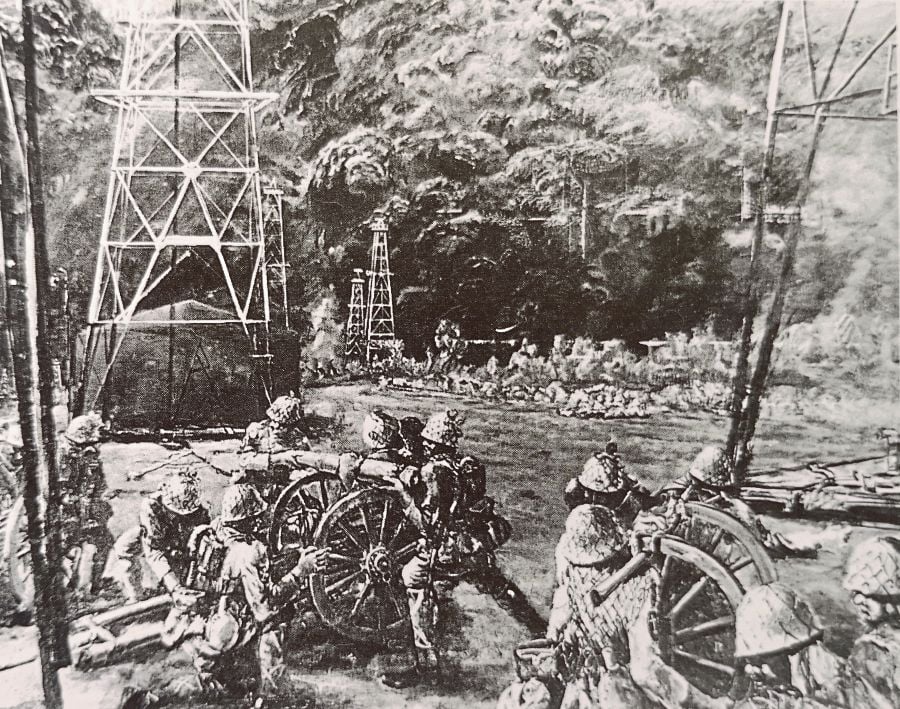
The Brooke government had been actively lobbying for the British government to accept Sarawak as one of its protectorates in the event of a war, which finally happened in 1888. By 1938, under the leadership of Rajah Charles Vyner Brooke, airstrips were constructed in Miri, Kuching, Oya, and Mukah in preparation for an imminent war. However, by 1941, the British Royal Navy and Royal Air Force had withdrawn from Sarawak and returned to Singapore. Therefore, the British government advocated a scorched earth policy for the Brooke government in the event of a Japanese attack. A Denial Scheme was formulated to destroy oil installations in Miri and Lutong. Soon after the news of the Japanese attack on Pearl Harbour, Japanese planes were seen making reconnaissance flights over Miri. The Brooke government decided on the destruction of oilfields and airfields in Miri. All producing oil wells were sealed up with vital equipment and machinery dismantled and shipped off to Singapore. On 16 December 1941, 9 days after the Pearl Harbor bombing, Japanese troops consisting of 10,000 men landed on Tanjung Lobang Beach, Miri without much resistance. After the fall of Singapore on 15 January 1942, skilled workers who went into hiding with their equipment were sent back to Miri by the Japanese. They were immediately put to work for the Japanese oil supply service company named Nen Ryo Hai Kyu. Much of the Japanese oil drilling and refinery equipment was portable. A total of 0.75 million barrels were produced during the Japanese occupation from 1941 to 1945.
During the occupation, Miri and Lutong became a periodic subject of Allied air raids and bombings. Food, clothes, and medicine were scarce. Workers of the Japanese oil supply service were used to reconstruct and maintain the Lutong Bridge and Lutong airstrip from Allied bombing damage.
The Miri Municipal Council has adopted the seahorse as the town’s official symbol because of its distinctive figure with gentle and graceful motion. These characteristics describe multiple ethnic and cultural identities of Miri which live in peace and harmony with good values of life. It also denotes the location of Miri town near the sea and coral reefs and the city’s status as a resort paradise. Miri City Day is celebrated each year on 20 May.
Miri is situated on the alluvial plain of the Miri River on the western shore of northern Sarawak on the island of Borneo. Because of the prevailing southerly off-shore current, beach drift has built up the Peninsula Road as a barrier beach between the Miri River and the shore causing a Yazoo effect where the river runs parallel to the coast before breaking through into the South China Sea. The city is predominately located on the inland or east side of the Miri River with only a few scattered residential neighbourhoods, a Golf Club and a small airstrip on Peninsula Road.
Located at the Saberkas Commercial Centre, the Saberkas Weekend Market is set up in the evenings from Thursday to Sunday. The vibrant market hosts over 170 stalls selling household items, fresh vegetables and fruits, local handicrafts, etc. The market is bustling on weekends with good music and plenty of appealing food stalls selling drinks and classic delicacies like BBQ chicken wings, satay, grilled fish, etc.
The Miri Handicraft Centre is located at Brooke Road and features handicrafts and souvenirs of Sarawak such as colourful bags, beadwork, woodcarvings, and textiles made by local indigenous groups, Chinese, and Malay artisans.
Located in the city centre, the Miri City Fan is a recreational park widely spread out across 10 acres of land with beautiful green trees, vibrant flowers and a beautiful promenade. The place has a large pond to feed fish and a botanical garden with a civic centre, amphitheatre, and a public swimming pool. Each corner of the park is a symbolic representation of races, and the park is well-decorated and brightly lit at night.
Constructed in the 2000s, the San Ching Tian Temple located in Krokop, about 3 km from Miri, is one of the largest Taoist temples in Malaysia. The temple has splendid Chinese architecture with classic double-decker red roofs and pleasing wind chimes along with intricate artwork on the building. It is spread across 1.5 acres of land with a large open-space courtyard.
The Miri May Fest is a month-long festival hosted every year in May since 1989 and is celebrated to mark the historic change of development when the government decided to promote the town of Miri to its current city status. Miri City Day will also be held during the Miri May Fest. Tourists can experience an extensive display of community events. The council hosts social and cultural events, musicals, singing and dancing shows, etc. daily to solely entertain and commemorate the residents of Miri. Some special events like Deep Sea fishing tournaments and Jazz music festivals are a part of this celebration too.
Also known as Brighton Beach, Tanjung Lobang Beach is probably Miri’s oldest well-developed recreational park. The area has the city’s marina with pristine blue waters and sandy beaches along with two magnificent wharves that offer gorgeous views of the sunset and the coastline. The seahorse-shaped lighthouse is close to the beach which signifies the seahorse city emblem of Miri. The park offers a food court with restaurants offering mouth-watering dishes and seafood delicacies while enjoying the glorious scene.
Also known as Taman Bulatan, Miri Bulatan Park is an ideal place to visit to get some fresh air or go for a morning jog. The park has two kids’ play areas and a replica village with little roads, bus stops and gas stations for the kids to drive their toy cars around. The centre of the park sees a large pond, surrounding which are the walking tracks. Close to the play area is an open air gymnasium structure with some workout equipment and instruments. The place has two admirable fountains and often has locals doing Chinese yoga.
Located on the outskirts of the city of Miri, the Crocodile Farm and Mini Zoo is home to more than a thousand crocodiles of various species. One can explore the farm, watch the feeding show and have a fun experience feeding the crocodiles. The miniature zoo houses a huge number of monkeys, parrots, hornbills, horses, rabbits, porcupines, pythons and other endangered wildlife species. The zoo enables one to learn more about the animal’s existence, lifestyle and natural habitat.
Believed to have Canadians residing here, Canada Hill is a fantastic place to go for a jog or run. Although the hill does not stand tall, it offers some beautifully picturesque blue sky backdrops and panoramic views of the city overlooking the sea. At the top of the hill are the interesting Petroleum Museum and the monument of the Grand Old Lady. The hill also has one of the finest views of breathtaking sunrise and sunsets.
In 2005, a petroleum museum was opened in Miri to preserve the city’s roots as an oil and gas city. The petroleum museum is built at the site of the Grand Old Lady, the first oil well in Malaysia which was opened in 1910. Visitors can interact with advanced devices displayed in the museum.
Mount Mulu, the fifth-highest mountain in Malaysia, is considered the most popular tourist attraction in Sarawak. A World Heritage Site, Gunung Mulu National Park houses the picturesque Mount Mulu. Also, it’s the second-highest mountain in Sarawak. Standing at a height of 2376 metres, this sandstone and shale pinnacle is a sight to behold. The most enchanting feature of the mountain is its unique limestone karst formations. A hiking tour on Mount Mulu is a must for ardent travellers and adventure-seekers. Mount Mulu experiences rainfall almost throughout the year, the wettest period being October to January and May to June. The months from July to September are comparatively dry and are the most crowded months because the dry season allows for safer hiking.
Miri plays host to three music festivals, namely Borneo Jazz Festival, Asia Music Festival (AMF) and Miri Country Music Fest (MCMF). The Borneo Jazz Festival which was started in 2006 is a two-night festival of 4 performances each night by local and international jazz musicians at the Parkcity Everly Hotel. The Asia Music Festival is also a two-day event featuring artists and musicians from Asian countries. It was first held in 2013 at Eastwood Valley Golf and Country Club, about 5 km from the city centre. It attracts about 4,000 music lovers attending the event. The Miri Country Music Fest (MCMF) is a one-day event introduced in 2014, held at Parkcity Everly Hotel. Among the activities that can be found here are music and dance workshops, and night concerts featuring country music bands from all over the world. Stalls selling food items, games, and souvenir items are also available.


